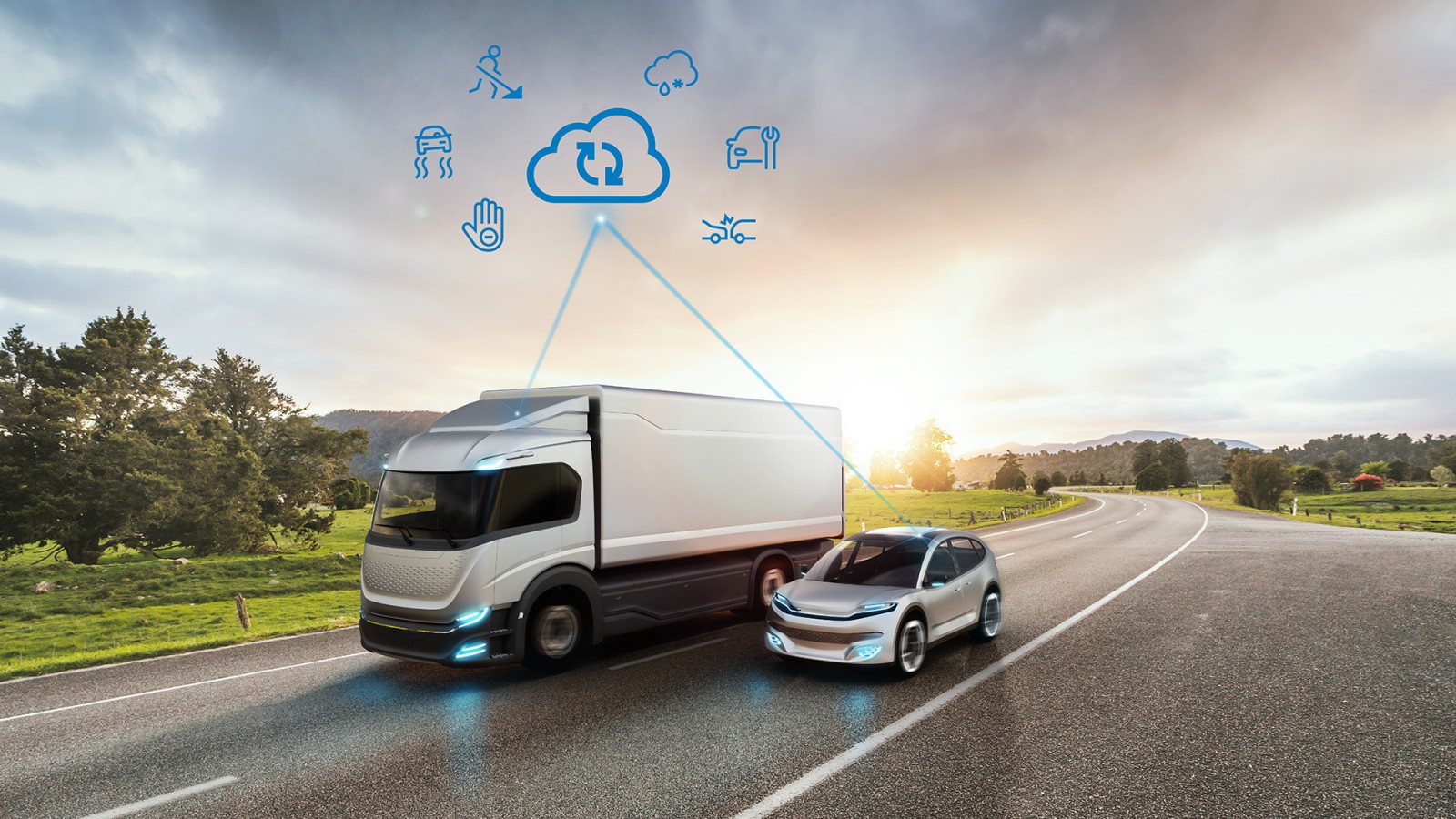
Greater safety for cars and trucks on the road
With its road hazard service, Bosch provides drivers with real-time information about potential hazards en route, thereby considerably reducing the risk of accidents. Dense fog, heavy rain, a broken-down vehicle behind the bend: in road traffic, such sudden events can have far-reaching consequences. Since June 2024, the Bosch road hazard service has been in use millions of times over in Europe in the car fleet of a leading German automaker. Now Bosch is bringing the service to the commercial vehicle segment: starting in December 2024, it will also be available in vehicles from Mercedes-Benz Trucks. The next goal is to expand rollout of the service to cars and trucks worldwide and thus increase road safety for as many people as possible.
Dr. Markus Heyn: “The road hazard service reports dangerous conditions in good time before a critical situation can arise.”
The service has been in use in millions of passenger cars since June 2024 and will be available in Mercedes-Benz Trucks vehicles for the first time as of December 2024.
Cloud-based real-time service increases road safety and considerably reduces the risk of accidents.
The road hazard service provides warnings for slippery roads, poor visibility, heavy rain, wind, accidents, broken-down vehicles, and wrong-way drivers.
How the Bosch service works
Critical road conditions can be precisely predicted on the basis of anonymized data from a global customer fleet of several million vehicles, as well as data from third-party providers such as weather services or road operators. The fleet vehicles equipped with the service provide various types of information, including local outside temperature and whether the windshield wipers or rear fog lights are activated, as well as accident reports or interventions by the ESP anti-skid system. For example, if some of the fleet vehicles have their windshield wipers set to the highest level, the service also compares the information with that of selected weather services – such as whether it’s raining or how many millimeters of water have been recorded on the road. A fusion algorithm determines whether there is a risk of, say, aquaplaning, and the service then warns the driver so that they can reduce their speed if necessary.
Or another example: if visibility for the driver threatens to fall below a critical level, the service compares this with the activity of the rear fog lights of vehicles in the affected region and uses an algorithm to decide whether a warning is necessary.
A reference fleet continuously ensures that the service stays at a high level of quality. Bosch’s wrong-way driver warning supplements the service. If there’s a wrong-way driver in the vicinity, or the driver themself is driving in the wrong direction, the service sends them a warning directly to the navigation display.
Part of the Bosch connected map services
The road hazard service is part of Bosch’s connected map services, which bring more safety and convenience to the vehicle. Their swarm data and weather information can also be used to optimize driver assistance systems such as adaptive cruise control or automatic emergency braking. For example, when the road is wet or slippery, the friction coefficient of the road is lower than when it’s dry, so the vehicle has to initiate emergency braking earlier in order to avoid a potential accident. With the service, drivers will be warned even earlier when the road surface is slick.
Connected map services play an important role in increasingly assisted and automated driving. They act as an additional sensor that looks far beyond the field of view and range of radar and video sensors to reliably supply the automated vehicle with all relevant data for safe driving, even in poor visibility conditions. In contrast to non connected vehicles, vehicles with connected map services benefit from the combined experience of all connected vehicles. This allows the vehicle systems to determine things such as the optimum driving speed in a traffic circle, the exact lane geometry and driving trajectory at convoluted intersections, or localization landmarks that the vehicle can use to calculate its position with centimeter precision. As a result, automated vehicles can drive more naturally and predictively.
“Our predictive road hazard service reports dangerous conditions to car and truck drivers in good time before a critical situation can arise.” Dr. Markus Heyn, member of the Bosch board of management and chairman of the Mobility business sector. In commercial vehicles, the service also makes it possible to reroute vehicles efficiently and in time to avoid hazards that suddenly crop up.” With the Bosch road hazard service, drivers receive real-time warnings about current events on their route. This includes information about accidents, wrong-way drivers, heavy rain or wind, broken-down vehicles, or restricted visibility due to, say, dense fog.
Source: bosch-presse.de
